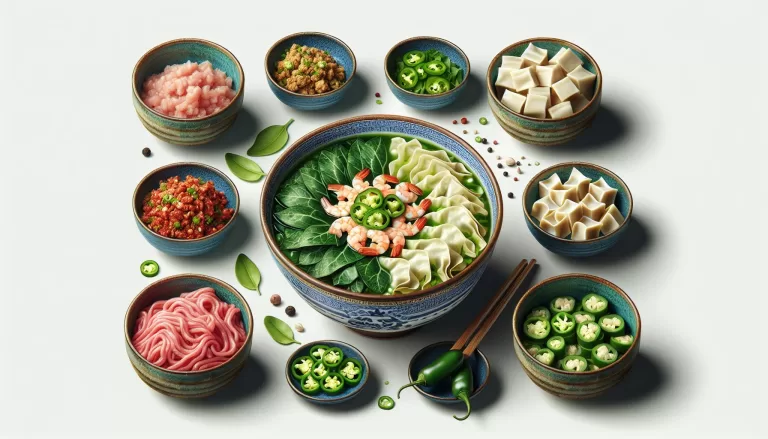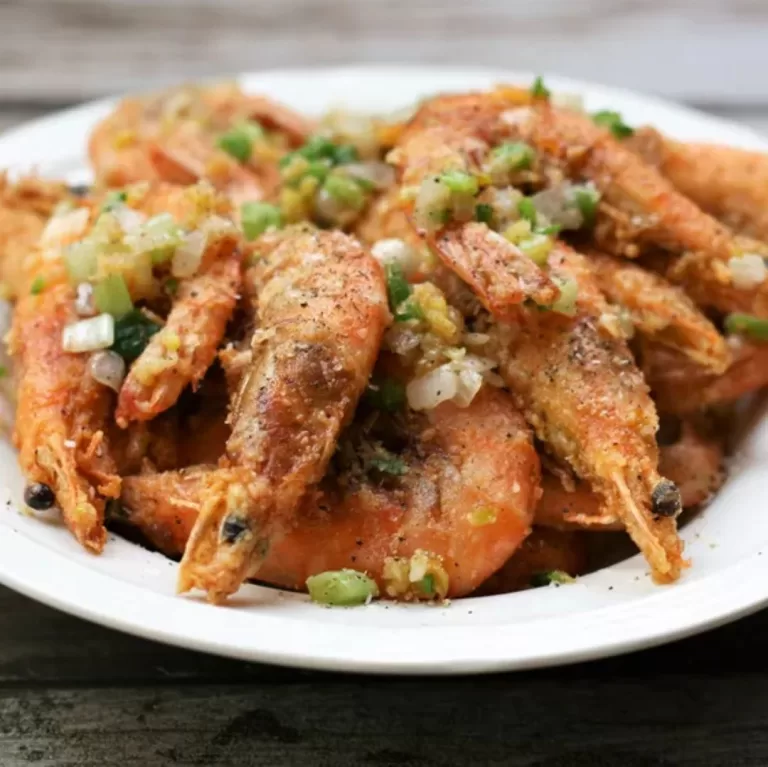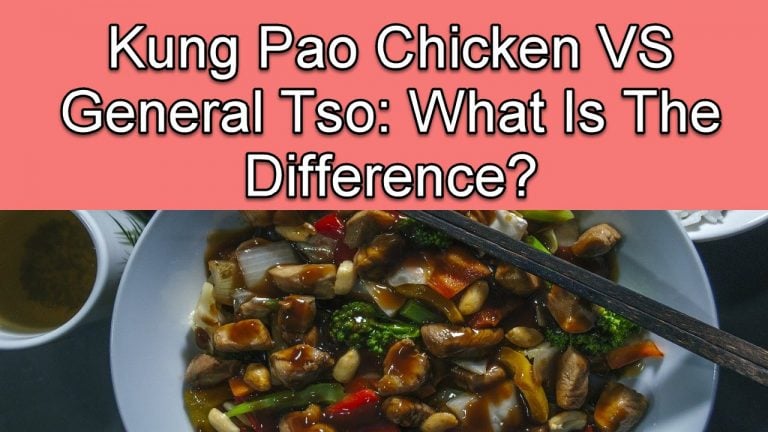Nutritious Homemade Soy Sauce Chicken Recipe with Health Benefits

Ingredients for Homemade Soy Sauce Chicken
This is where the magic begins. You’ll find the ingredients for this dish to be quite straightforward. Common staples in Asian cuisine, they are now more accessible across grocery stores worldwide.
Firstly, you need one whole chicken. It’s essential to choose a chicken that is fresh. An organic or free-range chicken is ideal if it’s within your budget. Remember, better-quality ingredients always lead to a superior final dish.
Let’s talk sauces and spices. You’ll need 1/2 cup of light soy sauce and 1/4 cup of dark soy sauce. Note the different types of soy sauce here. Each plays a critical role in the dish. The light soy sauce imparts that characteristic salty flavor, while the dark soy sauce gives it color and sweetness.
To balance out the soy sauces’ richness, we suggest using 1/3 cup of Chinese rice wine. It’s the secret ingredient many cooks overlook. If you can’t locate it, a dry sherry is a good substitute.
You’ll also want 1/4 cup of brown sugar. Sugar is a natural flavor enhancer, accentuating the umami flavors and adding a caramel-like sweetness.
Your aromatic ingredients will include 3 cloves of crushed garlic and 1 thumb-sized piece of fresh ginger, peeled and thinly sliced. Heart and soul of Asian cuisine, they give it a delightful rise in flavor.
Finally, you will need 4 star anise and 1 cinnamon stick. These two spices’ warm, subtly sweet flavor melds perfectly with the soy sauce, enhancing its depth.
Here’s a summary of your shopping list:
| Ingredient | Quantity |
|---|---|
| Whole chicken | 1 |
| Light soy sauce | 1/2 cup |
| Dark soy sauce | 1/4 cup |
| Chinese rice wine/dry sherry | 1/3 cup |
| Brown sugar | 1/4 cup |
| Cloves of crushed garlic | 3 |
| Fresh ginger | 1 thumb-sized piece |
| Star anise | 4 |
| Cinnamon stick | 1 |
Step-by-Step Instructions

Starting off with fresh and quality ingredients on your countertop: let’s get into the action. By following these straightforward steps, you’ll have a delectably aromatic dish to treat your taste buds.
First things first, prep the chicken. Rinse it thoroughly and pat dry with a paper towel. This step’s crucial to ensure getting rid of any unwanted particles clinging to the chicken.
Let’s start with the exciting part: the sauce mix. In a medium-sized bowl, mix 1/2 cup light soy sauce, 1/4 cup dark soy sauce, and 1/4 cup Chinese rice wine. Don’t rush this process; you want to ensure your condiments blend together perfectly.
The next step will require 2 tablespoons of brown sugar, 8 cloves of smashed garlic, 2 inch piece of sliced ginger, 2 star anise, and 1 cinnamon stick. Mix these spice-filled ingredients into your soy sauce mixture. These spices, you’ll note, add a significant depth of flavor and a lingering aroma to your dish.
This might be a bit non-traditional, but to make your dish stand out, add 1 teaspoon of Szechuan peppercorns. It’s optional but its unique citrusy and numbing flavor can be the twist your Soy Sauce Chicken needs.
Now you’re ready to cook. Immerse your chicken in your marinade and turn on the heat. Allow your mixture to come to boil, then reduce the heat to let it simmer. Patience is key at this point: let the chicken cook slowly, and absorb all the nuanced flavors of your marinade.
Throughout the cooking process, keep an eye on the chicken. Ensure it doesn’t stick to the pan, burning or altering the intended flavor. Your dish is almost ready when the chicken turns caramel-brown in color and absorbs the flavorful mixture.
Time to serve your Homemade Soy Sauce Chicken. Some prefer to chop the chicken into pieces, Chinese style. Pair it with jasmine rice or dumplings: an ultimate combo for a comforting and soul-satisfying meal.
| Nutrient | Amount per Serving |
|---|---|
| Calories | 362 kcal |
| Carbs | 9g |
| Protein | 25g |
| Fat | 23g |
| Vitamins |
Tips for Cooking Soy Sauce Chicken Perfectly
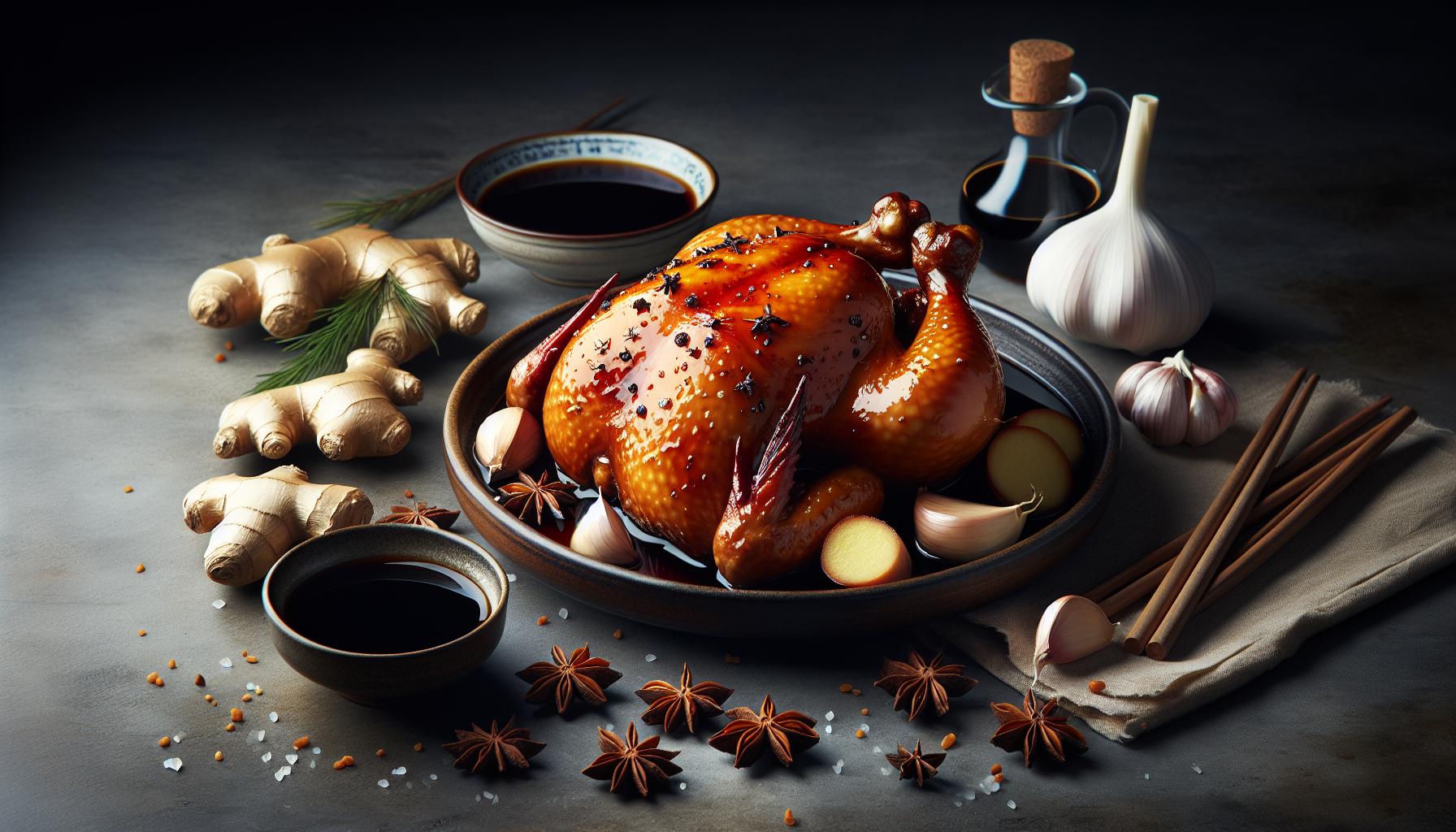
When the aroma of that homemade soy sauce chicken fills the air, you’ll know it’s worth all the effort. Here’s how you can make your chicken dish even better.
First of all, patience is key. Remember you’re not just cooking, you’re immersing the chicken in an intimate pool of flavors. The longer and slower you cook, greater the flavor infusion. But avoid overcooking. That’s not what we’re aiming for.
Secondly, fresh ingredients make a world of difference. Your garlic, ginger, star anise, cinnamon, and Szechuan peppercorns should be as fresh as possible. Freshly ground spices emit oils that are those tiny flavor bombs you’re after.
Next, don’t shy away from experimenting. Traditional recipes are essential, yes. But there’s always room for a little magic. Consider adding that secret ingredient that’ll make your dish overlooked by none. Perhaps a dash of Chinese black vinegar or maybe a spoonful of hoisin sauce.
Consistency matters too. Pay close attention to the soy sauce and Chinese rice wine ratio. It can significantly impact the end-result. You want the balance to be just right: not too salty, not too sweet.
Lastly, remember to let the cooked chicken rest before serving. It helps the juices to be distributed evenly, contributing to a juicy, tender bite.
Remember, soy sauce chicken isn’t just a dish. It’s an access pass to a rich cultural experience. So go ahead, put your heart into it. See where it takes you.
For those seeking nutritional information for this dish, here’s how it measures up:
| Nutrition | Per Serving |
|---|---|
| Calories | 269 |
| Carbs | 12g |
| Protein | 32g |
| Fat | 7g |
And there’ll be no buyer’s remorse here. Each bite of this incredible dish promises flavorsome worth and sheer delight. So grab your apron, it’s time to brew some magic.
Serving Suggestions and Pairings
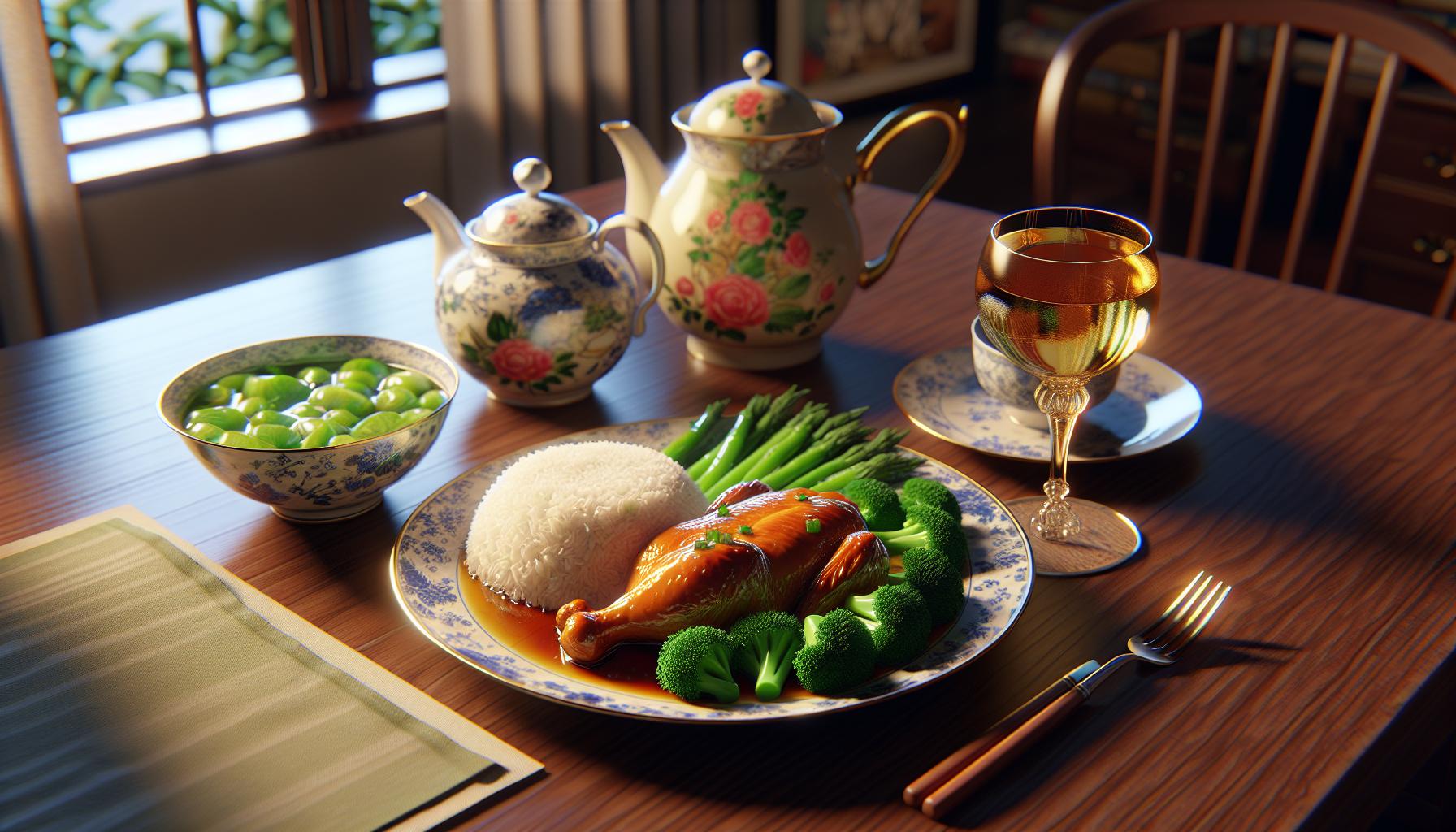
Once you’ve mastered the art of preparing homemade soy sauce chicken, it’s time to set the stage for a full dining experience. As much as the recipe itself, the accompaniments and drink pairings greatly contribute to the overall appeal of this dish.
Rice is a basic pairing that brings out the delicious flavors of this chicken dish. Whether steamed or fried, it serves as a hearty canvas for your savory chicken.
Steamed vegetables offer a refreshing counterbalance. Broccoli, bok choy, or any green, leafy vegetable complements the tarty and zesty notes of the soy sauce chicken. The contrast also adds a visual pop to your plate.
Looking for a low-carb accompaniment? Crisp salads with lettuce, cucumber, and radishes can enhance the meal’s variation in easygoing bites. Dress the salad lightly with a sesame vinaigrette for a continued Asian flavor theme.
While water is a default drink with your meals, tea and Asian beers might better complement your homemade soy sauce chicken. A light, floral tea such as Jasmine eases down the robust flavors. Meanwhile, Asian beers like Asahi or Tsingtao refresh the palate, providing a bubbly contrast to the rich soy sauce.
For the wine lovers out there, a chilled bottle of Riesling is a delightful companion to this dish. Its sweet notes mellow the saltiness of the chicken while enhancing its flavors.
But remember, these are just suggestions. Pair your chicken with whatever tickles your palate to create a unique, enjoyable meal.
Still feeling adventurous after these serving suggestions? You’ll love our additional tips on how to host the perfect Asian-themed dinner party. Stay tuned.
Health Benefits of Homemade Soy Sauce Chicken

While delicious, your homemade soy sauce chicken isn’t just a treat for your taste buds. It’s also packed with several essential nutrients that contribute to a well-rounded, healthier diet.
First off, chicken is a high-quality protein source. A single serving can contribute significantly to your daily protein requirement. Protein plays a crucial role in your body’s growth, tissue repair, energy supply, and it supports overall immune function.
Not to forget, chicken is low in saturated fat. The majority of fat in chicken is unsaturated, which can lead to improved cholesterol levels and heart health. Stacy’s Tip: Opt for skinless chicken if you want to reduce fat content even more!
| Nutrient | Amount per Serving |
|---|---|
| Protein | 25g |
| Fat | 7g |
Homemade soy sauce chicken is also high in various essential minerals. For instance, it contains iron and zinc. Iron helps in oxygen transportation to your body cells, while zinc supports your immune system.
Let’s discuss soy sauce now – the hero that adds the savoury punch to the dish. The fermented soya beans in the sauce are the sources of essential minerals such as magnesium, potassium and antioxidants. They can help in regulating fluid balance, blood pressure and reduce oxidative stress in the body.
Lastly, by cooking at home, you have the power to control your portion sizes and manage the ingredients that go into your dish. You can use healthier oils, control the salt intake and add more vegetables to enrich the dish further.
Conclusion
So, you’ve seen how homemade soy sauce chicken isn’t just a tasty dish to serve at your dinner table. It’s a powerhouse of nutrients, offering high-quality protein, essential minerals, and antioxidants. With soy sauce adding an extra health punch, it’s clear this recipe is a winner on all fronts. Remember, the beauty of home cooking is that you’re in control. You decide the portions, you choose the ingredients. It’s your chance to make healthier choices, like swapping in healthier oils or adding more veggies. So, why not give this recipe a try? It’s not just about the flavors, it’s about making choices that benefit your health too. After all, good food is good health.
